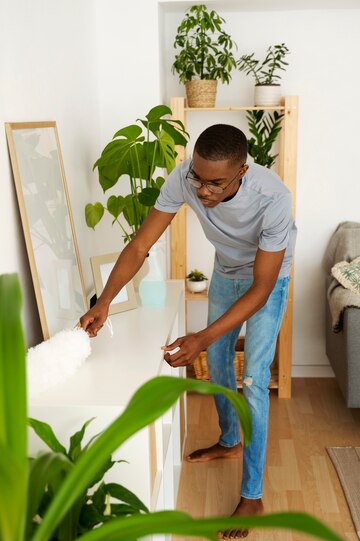How to Improve Your Home: Comprehensive Tips and Strategies for 2024

Improve your home is more than just a place to live—it’s a sanctuary where you relax, entertain, and create memories. As we move into 2024, improving your home can not only enhance your quality of life but also increase its value and functionality. Whether you’re looking to make minor updates or undertake major renovations, there are numerous ways to transform your living space into a more comfortable, efficient, and aesthetically pleasing environment. This guide will explore various strategies for home improvement, from simple DIY projects to more complex renovations.
1. Assessing Your Home Improvement Needs
Before embarking on any home improvement project, it’s crucial to assess your current situation. Consider the following:
- Functionality: Identify areas that are not functioning well or need better use of space.
- Aesthetics: Look for parts of your home that feel outdated or lack visual appeal.
- Efficiency: Evaluate aspects like energy efficiency, insulation, and appliance performance.
- Budget: Determine how much you’re willing to spend and plan accordingly.
2. Enhancing Curb Appeal
The exterior of your home is the first impression visitors and potential buyers will have. Improving curb appeal can make a significant difference:
- Landscaping: Invest in professional landscaping or DIY garden projects to create an inviting outdoor space. This can include planting flowers, shrubs, and trees, as well as adding pathways and outdoor lighting.
- Exterior Painting: A fresh coat of paint can rejuvenate the look of your home. Choose colors that complement the architectural style of your house.
- Front Door Upgrade: Replacing or painting your front door can provide an immediate boost to your home’s appearance. Consider adding new hardware or a decorative wreath.
- Roof and Gutters: Ensure your roof is in good condition and clean out gutters regularly to prevent damage and maintain a polished look.
3. Revamping Interiors
Updating the interior of your home can create a more enjoyable and functional living environment:
- Painting: A fresh coat of paint can dramatically change the look and feel of any room. Opt for neutral colors for a timeless look or bold hues for a statement.
- Flooring: Upgrading your flooring can enhance both the appearance and comfort of your home. Consider options like hardwood, laminate, or high-quality carpets.
- Lighting: Modernize your lighting fixtures to improve both style and functionality. Incorporate layered lighting, including ambient, task, and accent lighting, to create a well-lit space.
- Furniture and Decor: Updating furniture and decor can breathe new life into your living spaces. Invest in quality pieces that reflect your style and complement your home’s design.
4. Improving Energy Efficiency
Enhancing energy efficiency not only reduces utility bills but also contributes to a more sustainable home:
- Insulation: Proper insulation in walls, attics, and floors helps maintain a comfortable temperature and reduces energy consumption.
- Windows and Doors: Upgrade to energy-efficient windows and doors to minimize heat loss and improve insulation.
- Smart Thermostats: Install a smart thermostat to better control heating and cooling systems, optimizing energy use.
- LED Lighting: Replace traditional light bulbs with LED bulbs, which are more energy-efficient and have a longer lifespan.

5. Upgrading Kitchen and Bathrooms
The kitchen and bathrooms are often considered the heart of the home. Upgrading these areas can significantly enhance your home’s value and functionality:
- Kitchen Renovations:
- Cabinetry: Consider repainting or replacing cabinets to refresh the look of your kitchen.
- Countertops: Upgrade to durable materials like quartz or granite for a modern look.
- Appliances: Invest in energy-efficient appliances to reduce energy consumption and improve functionality.
- Backsplash: Add a stylish backsplash to enhance the visual appeal of your kitchen.
- Bathroom Renovations:
- Vanity and Fixtures: Update your vanity and fixtures for a more contemporary look.
- Shower or Tub: Consider installing a new shower or tub for improved functionality and aesthetics.
- Tile Work: Replace old tiles with modern options to refresh the look of your bathroom.
- Storage Solutions: Incorporate smart storage solutions like floating shelves or built-in cabinets to maximize space.
6. Enhancing Storage Solutions
Effective storage solutions can help keep your home organized and clutter-free:
- Built-In Storage: Utilize built-in shelves and cabinets to maximize space in areas like living rooms, bedrooms, and home offices.
- Closet Organizers: Install closet organizers to optimize space and improve accessibility.
- Multi-Functional Furniture: Choose furniture pieces that offer hidden storage, such as ottomans with storage compartments or beds with built-in drawers.
- Garage and Attic: Organize these areas with shelving units and storage bins to keep items accessible and tidy.
7. Incorporating Smart Home Technology
Integrating smart home technology can enhance convenience, security, and energy efficiency:
- Home Security Systems: Install smart security cameras, alarms, and locks to protect your home and monitor activity remotely.
- Smart Lighting: Use smart bulbs and lighting systems that can be controlled via smartphone apps or voice commands.
- Voice Assistants: Implement voice assistants like Amazon Alexa or Google Assistant to control various smart devices and manage tasks.
- Smart Plugs: Utilize smart plugs to control and schedule appliances remotely, improving energy efficiency.
8. DIY Projects vs. Professional Help
Deciding whether to tackle home improvement projects yourself or hire a professional depends on several factors:
- Complexity: Complex tasks like electrical work, plumbing, or structural changes should be handled by professionals to ensure safety and compliance with building codes.
- Skill Level: Evaluate your own skills and experience. Simple projects like painting or landscaping can often be done DIY, while more intricate tasks may require professional expertise.
- Budget: While DIY projects can be cost-effective, professional services ensure high-quality results and can save time and stress.
9. Maintaining Your Home
Regular maintenance is crucial for preserving the value and functionality of your home:
- Routine Inspections: Schedule regular inspections of your home’s systems, including HVAC, plumbing, and electrical, to catch potential issues early.
- Cleaning: Maintain cleanliness by regularly cleaning carpets, upholstery, and surfaces to prevent wear and tear.
- Repairs: Address minor repairs promptly to prevent them from becoming larger, more costly problems.
10. Final Thoughts
Improving your home is an ongoing process that can enhance both your living environment and your quality of life. By assessing your needs, focusing on key areas like curb appeal, interiors, and energy efficiency, and deciding between DIY and professional help, you can create a space that reflects your style and meets your needs. Remember to stay informed about current trends and technologies to make the most of your home improvement efforts. With careful planning and execution, you can transform your home into a more comfortable, functional, and enjoyable space for years to come.







